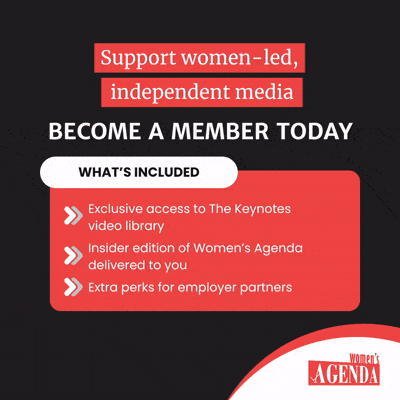Over the past decade a strong “digital factor” has emerged as a driving force behind women getting into business for themselves, spurred by new technology, better access to funding and the demystification of starting a business.
New Fintechs and non-traditional financing options with digitally facilitated transactions based solely on the merits of the business have eliminated any existing gender bias from funding options. A home-based mother-of-two wanting to start her own online business will find it much easier to find funding today versus 10 years ago, when the same woman would have been hard pressed to find a loan from a bank.
Research by the Australian Women Chamber of Commerce and Industry released last year shows the number of women starting their own businesses doubled between 2007 to 2013; with about 1 million women trading in Australia via online businesses in 2013.
Recent 2013 statistics from the Australian Bureau of Statistics show the percentage of businesses owned by females in Australia is 34%. It is estimated that around 31% of SMEs in Australia are owned by women. (And just for good measure, a recent government report from the Australian Government’s Workplace Gender Equality Agency, claims that women represent 17.3% of CEOs in 2015, up from 11.8% in 2004-05.)
Online businesses are flexible with work hours, often eliminating any specific office-type hours, and can operate from anywhere at any time.
While this is attractive to most people (who doesn’t want to work their own hours, at their own pace, from wherever they are?) it has proven particularly convenient and encouraging for women as they no longer have to make the radical choice between career and family.
The business can stay as small as they like, and it can grow when they are ready and capable of devoting more time. This essentially means that a slew of woman in Australia, and around the world, are accessing new income streams that can grow in proportion to the effort they put in. This in turn means that that the female market online is becoming increasingly wealthy overall, which circles to dovetail nicely with the growth of women operating businesses online.
A recent Nielsen report shows women spend more time on both mobile app and web browsers, making the female digital market that much more accessible. Another recent study shows that women spend more time on social media sites like Facebook, Tumblr, Pinterest, Snapchat, Instagram and Twitter, are more vocal and sharing-oriented, and are more likely to take action on social media advertising as a result of that community experience. So, it all comes together quite nicely for women online, both as consumers and business owners.
Women have long been known to be the chief purchasers of goods for their households, and this has extended to online product categories. Women generally have an equal or greater say in the choice of things such as holiday destinations in a married household, and are more likely to be the ones making those purchases, regardless of who pays. They also are more likely to review recommendation portals for goods and services such as Trip Advisor and Angie’s List. Then, as mentioned above, they are more prone to write reviews of the experience, with those reviews being more identifiable to other women and thus more trusted.
All of which means it has never been a better time to be a woman in business, because business has changed a lot. You can be uber-successful, or just earn a little extra money, as you want, when you want, and it doesn’t mean that other important aspects of your life need to suffer.
The work environment you create is up to you. So, now, more than ever before, you really can have it all.
This article was first published on our sister site, Smart Company

